CNRS research repository for document and multimedia sharing
Designed at Hippocampe for CNRS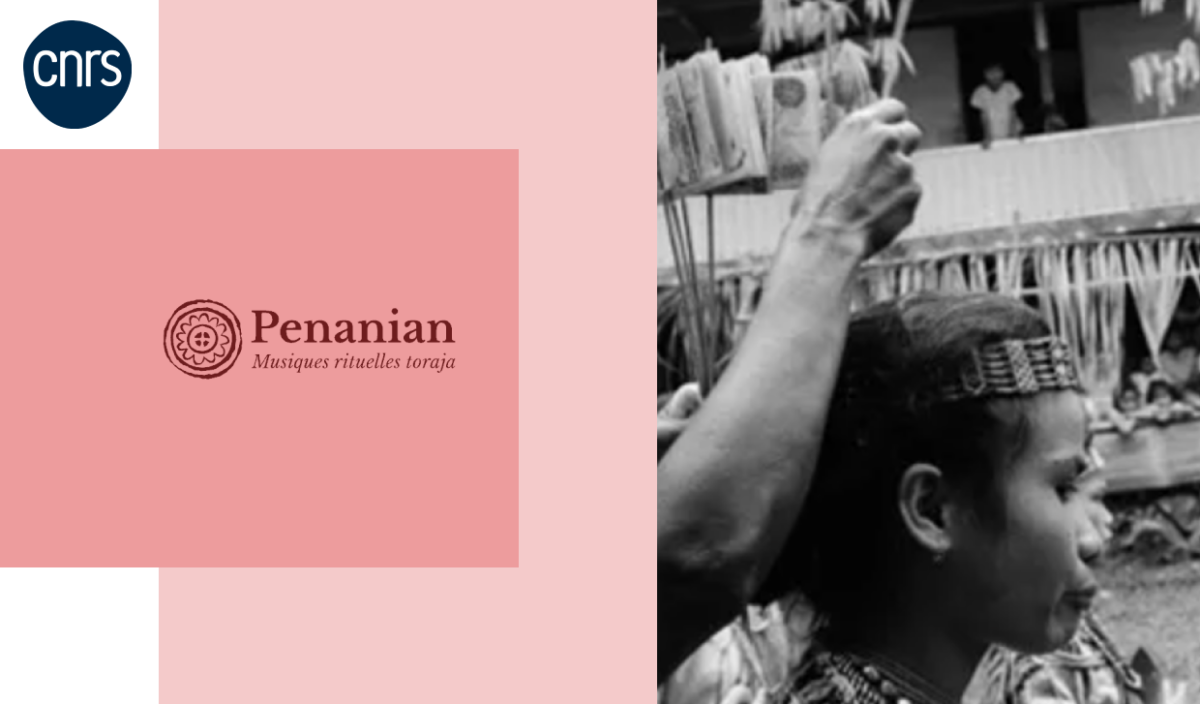
Overview
The National Center for Scientific Research (CNRS), a public research organization under the supervision of the Ministry of Higher Education and Research, conducts multidisciplinary research across various fields, from physics to social sciences. With over 30,000 collaborators and international partnerships, CNRS is renowned for its contributions to scientific advancement and innovation.
The project aimed to design an ergonomic platform to centralize and share 30 years of research on the ritual music of the Toraja people, an ethnic group from Sulawesi, Indonesia. This research, conducted by Dana Rappoport (CNRS), has resulted in a rich multimedia anthology, featuring texts, audio recordings, images, and videos, along with an in-depth study of the musical and poetic traditions of the Toraja people.
Initially cataloged and distributed on DVD, the research materials required a complete rethink of the search workflow, presentation methods, and overall architecture to deliver a seamless and responsive online experience.
The primary objective was to develop a reference tool for researchers and traditional music enthusiasts, addressing three key challenges:
- Global Accessibility: Providing free access to content worldwide.
- Cultural Heritage Preservation: Enabling an in-depth exploration of Toraja music and cultural practices.
- Academic Recognition: Establishing the platform as a key reference for traditional Indonesian music studies.
Problem
How can we enable researchers and traditional music enthusiasts worldwide to access Dana Rappoport’s comprehensive research on the ritual music of the Toraja people in Indonesia, with the aim of exploring and understanding the poetry of the Toraja culture, while establishing ourselves as the leading reference for knowledge and audio resources on traditional Toraja music?
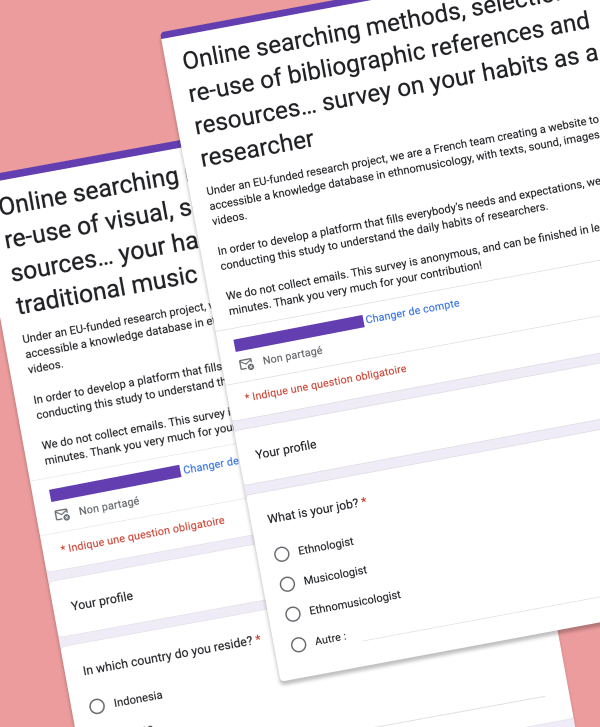
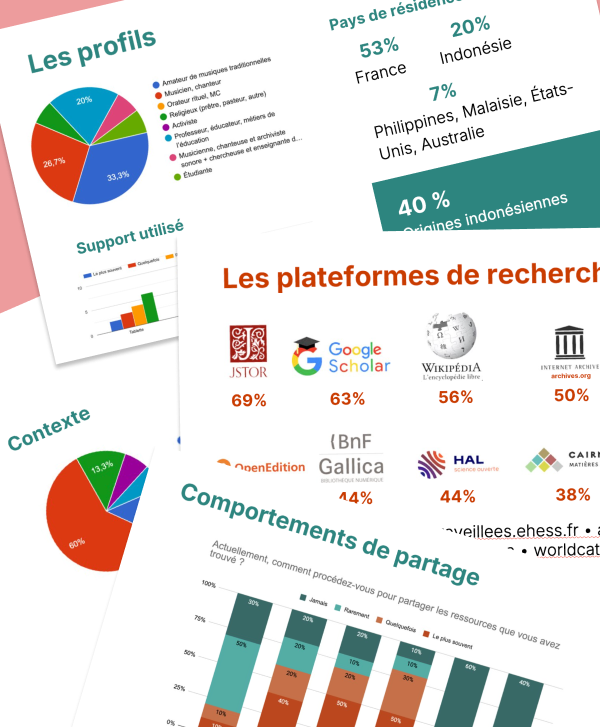
Design process
We began this project with an in-depth audit of existing content to analyze and evaluate the documentary and multimedia resources, ensuring a clear understanding of their structure and accessibility.
Building on this foundation, we restructured the existing data architecture to optimize information organization, facilitate seamless navigation, and design replicable layout templates for consistent presentation.
At the same time, to better understand user needs, we conducted a user expectations analysis, targeting both researchers and traditional music enthusiasts (French- and English-speaking) through various questionnaires.
With these insights, we organized a discovery workshop with stakeholders to refine our understanding of the users, share key findings, and explore the project’s objectives, constraints, and opportunities.
To deepen our analysis, we conducted a benchmark study of similar platforms.
This preparatory work led to a project definition workshop, where we identified key challenges, priorities, and pain points.
Next, a co-design workshop with the CNRS team allowed us to define functionalities and align the project vision with expert insights.
With this foundation, we mapped out the overall user journey and workflows, collaborating closely with the CNRS technical team to ensure feasibility.
We then designed wireframes for replicable page structures, providing a strong visual framework.
Once the wireframes and functionalities were validated, we developed interactive prototypes to simulate user journeys for usability testing workshops. These prototypes enabled us to collect feedback on the platform’s ergonomics and usability.
Following this, we analyzed and synthesized the test results and presented them to the CNRS team to validate necessary adjustments.
Finally, we concluded the design phase by drafting a functional specification document, detailing the platform’s overall structure, interaction logic, and technical specifications to guide the development team in bringing the project to life.
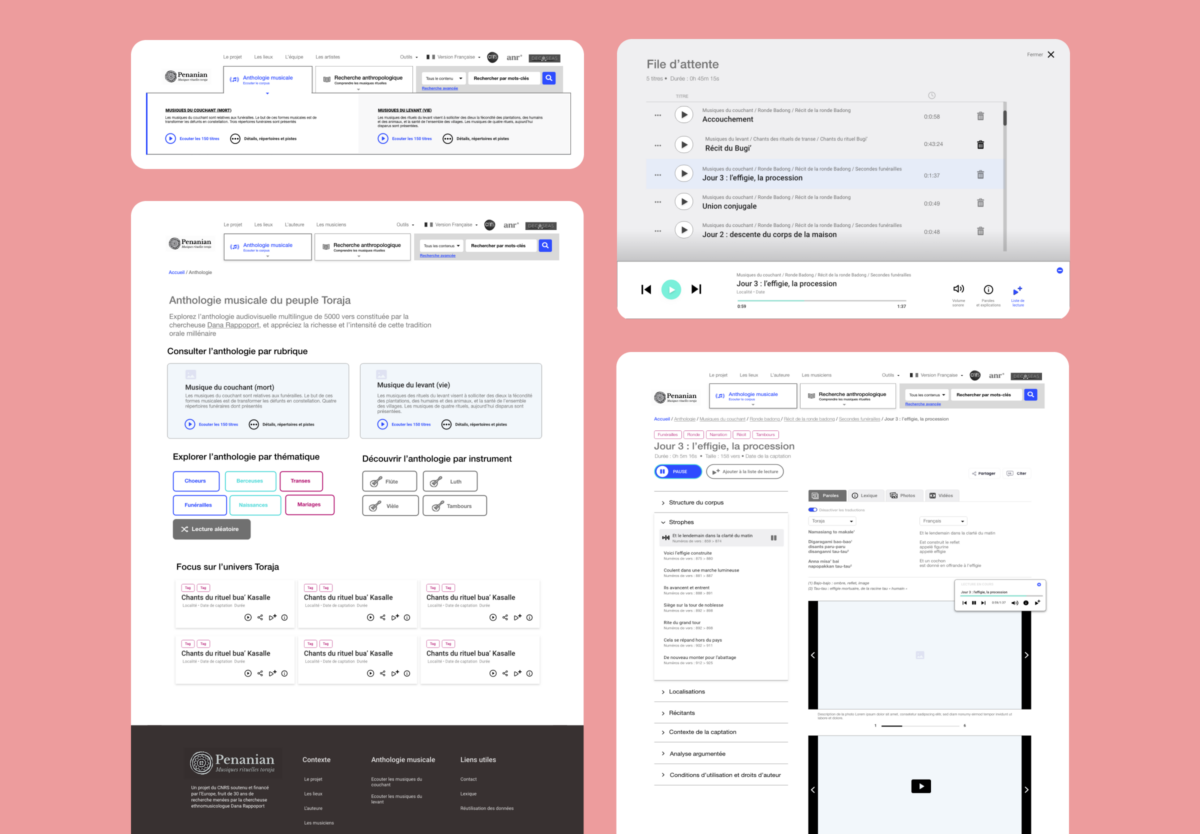
Solution
We designed a platform that includes:
- A multimedia anthology featuring audio recordings, videos, images, and texts.
- A research library containing in-depth scientific analyses.
- Structured content, organized by categories, directories, corpora, and audio titles.
For the structure and data architecture, we chose to organize the platform around two main sections:
- Musical Anthology: A collection of audio resources, organized by categories, repertoires, corpora, and audio titles.
- Research & Analysis: A section featuring in-depth scientific studies and analyses on Toraja music.
Key Features for Researchers:
- An advanced search engine with detailed metadata and structured content hierarchy.
- A streamlined user interface for quick and easy access to information.
- The ability to annotate and share resources effortlessly.
- Interoperability with tools like Zotero and CSV export capabilities.
Key Features for Traditional Music Enthusiasts:
- An intuitive and high-performance multimedia player for seamless listening and viewing.
- Rich cultural and historical context to enhance understanding of the music.
- Advanced search and filtering options by media type (audio, video, images).
- The ability to explore new content without requiring prior specialized knowledge.
Accessibility & User Experience:
- Lightweight and responsive interface optimized for mobile access and low-bandwidth connections.
- Multilingual support (including English) with a clear data structure and a breadcrumb navigation system for easy orientation.
- Extended sharing features via social media and email.
Reliability & Credibility of Sources:
- Use of recognized standards and reference frameworks to ensure data integrity.
- Clear presentation of usage licenses and verified sources for transparency.
- Involvement of local musicians in content validation to ensure cultural authenticity and accuracy.
Eco-design & Performance:
- Page weight optimization for a smooth and efficient browsing experience.
- Efficient video and image management using compressed and adaptive formats.
- Data caching to reduce loading times and improve performance.
User testing conducted on the prototypes revealed that all the testers (researchers and traditional music enthusiasts) were satisfied with the overall experience. They appreciated the interface and expressed interest in using the platform as soon as it goes live.
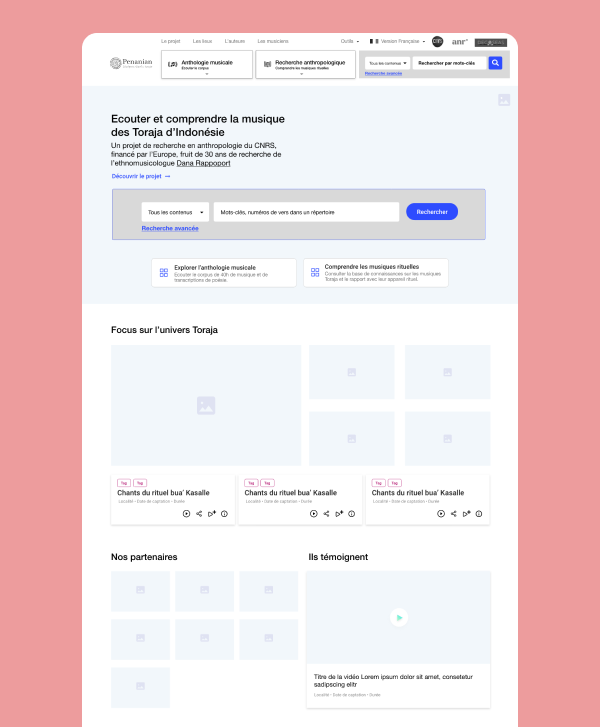

Insights
This project raised several challenges in UX design, particularly the need to reconcile the specific needs of researchers with the ambition to provide an immersive and accessible experience for traditional music enthusiasts.
One of the main challenges was designing an inclusive interface, simplifying certain terms and practices specific to the research world to make the platform intuitive for a broader audience. This approach met resistance from the management team, primarily composed of researchers, requiring a pedagogical effort to demonstrate the benefits of a user-centered design.
Understanding the mental models and vocabulary of researchers was complex, making it essential to organize empathy and co-design workshops to align expectations and translate needs into functional solutions.
Managing the volume and complexity of data was another significant challenge, requiring an optimized information architecture to ensure smooth navigation and effective content accessibility.
Another obstacle was the reluctance of decision-makers to move away from the previous data organization structure they were accustomed to. This cognitive bias required an iterative approach, using user testing to gradually demonstrate the benefits of a new structure more suited to web-based usage.
A valuable insight gained from the project was considering the perspectives of oral transmission actors (professors, religious figures, ritual experts) from different countries, offering a different view on accessing and transmitting knowledge. This helped balance the scientific requirements with a more narrative and cultural dimension.
Finally, a delicate balance had to be struck between data accessibility and data protection. While researchers wanted an open and fluid sharing of resources, the lead researcher, having previously encountered data theft issues, expressed the need for solutions ensuring traceability and control over shared content. The platform’s design thus had to navigate between these two imperatives, requiring UX compromises to ensure both transparency and security without compromising the user experience.